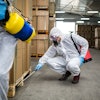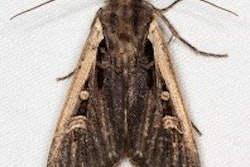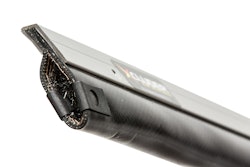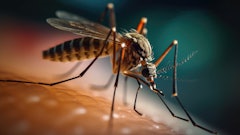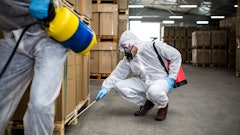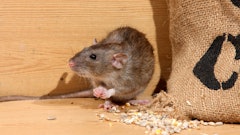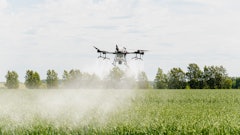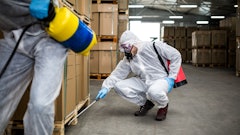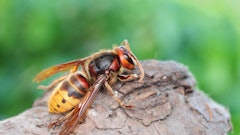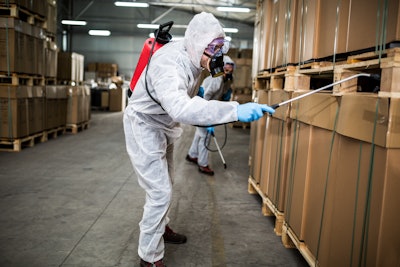
While you may know how to adjust your operations and schedules for when the temperatures drop, is your facility ready to handle seasonal pest changes?
Each season brings its own set of pest challenges, especially for facilities dealing with food. Whether it’s flying insects in the warmer months, tiny crawlers in the spring or filthy rodents in the fall, food handling facilities are popular destinations for pests.
What types of pests can you expect in the winter?
In the winter, harsh weather conditions and a limited food supply force pests like cockroaches, rodents and boxelder bugs to seek shelter indoors. Some types of wildlife, like birds, can also find themselves in your facility when escaping bad weather. And, when you’re busy making sure operations run smoothly, you don’t have time to monitor for pest activity. With the added rush of the holiday season and without a proper prevention plan in place, you could find your operations halted to resolve a sudden pest infestation.
Where should you look for pests in your facility?
Regardless of the season, pests will settle anywhere that has shelter, moisture and food. Unfortunately, food processing facilities usually have an abundance of all three, making them a pest paradise. Previously, the worry was contaminated products and damaged machinery, but now you must also consider the significant additional stress of sick employees and disrupted operations. So, how do you keep them away? Start by learning where to find them:
- The production floor. While this is where the magic happens in your facility, it offers pests plenty of food debris, moisture and shelter in those hard-to-reach spots.
- Storage rooms. With less foot traffic, these areas make the perfect hiding spots for pests.
- Loading docks. Hitchhiking pests like cockroaches, ants and spiders can easily enter facilities via the delivery trucks and shipping containers being introduced into your property daily.
- Roofing. Because it’s unlikely that employees would inspect the roof regularly, pests like roof rats and birds often go unnoticed.
- Breakrooms. Employees’ leftover meals, spilled sugar from the morning coffee rush and overflowing trashcans can attract a flurry of pest activity in no time at all.
- Drains and restrooms. Abundant moisture welcomes cockroaches and occasional invaders like silverfish, beetles and flies.
5 proactive ways to help prevent winter pests
Here’s what you need to know about winter pest activity. After all, helping to prepare the facility now will let you focus on what really matters -- smooth operations.
1. Build up an exterior defense with exclusion
Exclusion is a preventive practice that focuses on protecting the outside of your property, so pests can’t get inside. No matter your business’s physical location, simple measures like sealing cracks and crevices, replacing broken ventilation covers and installing weatherstripping can go a long way in keeping pests out. To begin, schedule a facility inspection with your pest control provider, so they can show you which areas to focus on and specific exclusion tactics for your facility.
2. Make sanitation a top priority
Not only does maintaining a clean facility make operations run smoother, but your employees will also feel more comfortable coming to work when they don’t have to worry about spotting a cockroach in the breakroom. Because food safety is essential in your line of work, you most likely already have a sanitation schedule in place. Revise this schedule seasonally and make necessary adjustments to ensure seasonal pests don’t become a problem. Here are some quick wins to get you started:
- Remove trash daily and keep the dumpster area clean.
- Disinfect high-touch surfaces like doorknobs, preparation counters and machinery.
- Flush out your drains monthly to break down any organic matter and help prevent flies.
- Wipe up spills immediately, so they don’t become sticky attractants for cockroaches and rodents.
3. Implement proper storage procedures
Remember first-in/first-out? Make sure your employees are practicing this method when storing products before and after shipping them. While food products shouldn’t be sitting in factory storage for extended periods of time, shutdowns, delays and canceled shipments can occur. Properly spacing storage containers helps reduce the number of pest hiding places. Don’t forget to remove excessive packaging after inspecting goods, so pests don’t have additional hideouts. Watch out for cockroaches and rodents, which are known to chew through cardboard boxes.
4. Set up remote pest monitoring
When you’re running an around-the-clock operation, your employees might not have time to monitor for pests and perform their responsibilities. Remote pest monitoring can help. There are a variety of devices that can be used depending on the facility’s specific needs and structure, but the results are mostly the same -- you’ll be able to track pest activity from any location, engage the pest control provider when needed, spot trends and address issues before they become serious problems. Remote pest monitoring is especially beneficial in automated food manufacturing and processing facilities that have little human activity to spot pest issues. With fluctuating health restrictions, social distancing guidelines and other mandates, remote pest monitoring can give you the reassurance that your pest issues are taken care of.
5. Train staff on how to spot and report signs of pest activity
This tip may be the last in the list, but it’s one of the most important. Most pest control providers offer complimentary staff training. Your employees are the eyes and ears of the facility because they know the layout and understand the pain points. Once your staff know the types of pests that frequent the facility, persistent hot spots and the process for reporting activity, they’ll be able to help you kick these critters to the curb. Do your part as a leader by making sure pest activity logs are accessible to your teams, and don’t forget to involve your sanitation team as they’re most likely to spot pest issues during cleanings.
Now that you have a better understanding of ways you can effectively help keep pests out of your facility this winter, be sure to involve your pest control provider, as they should be your partner in prevention. By following these tips and communicating regularly with your pest control provider, you and your staff will be ready to weather this winter and focus on what matters most in no time—keeping your customers happy and growing your bottom line.



